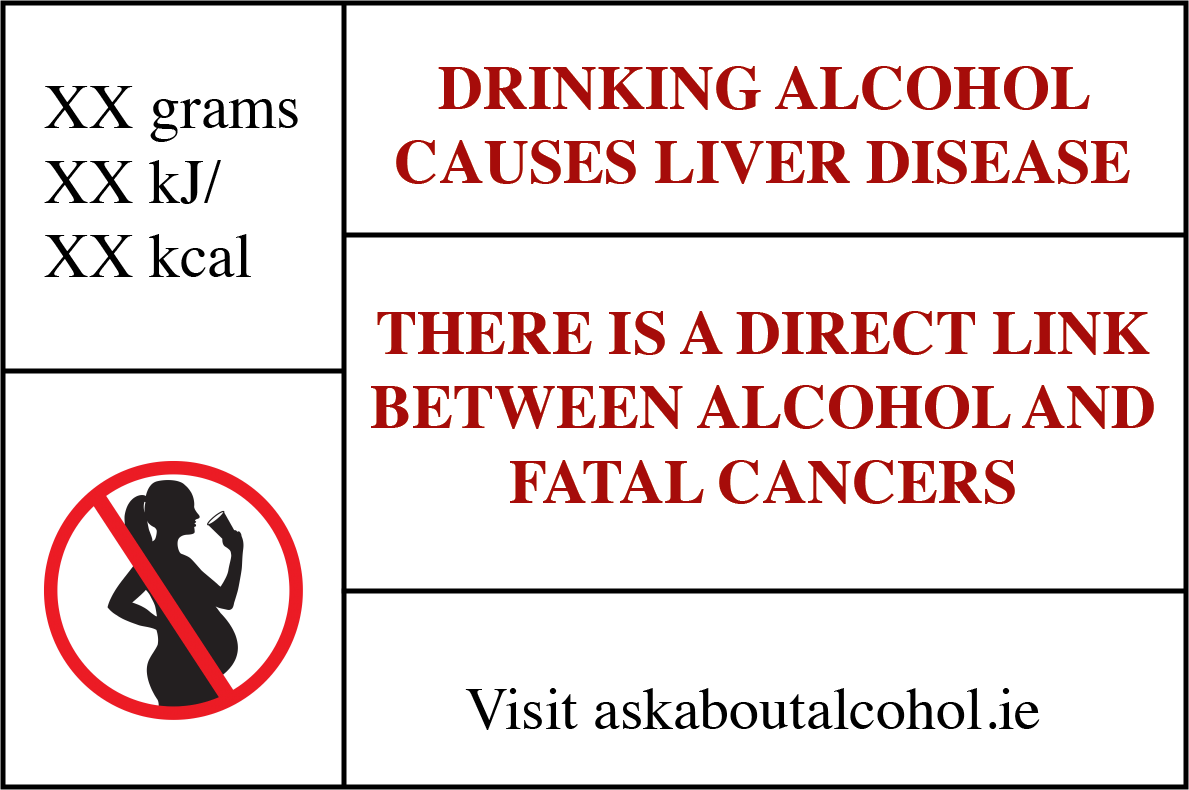National Alcohol Health Warning Labelling: A Lawful Measure Under EU Law
Alcohol Health Warning Labells used in the study: Testing Alcohol Labels as a Tool to Communicate Cancer Risk to Drinkers: A Real-World Quasi-Experimental Study

By Dr Nikhil Gokani. Nikhil is Lecturer in Consumer Protection and Public Health Law at the University of Essex and Chair of the Alcohol Labelling and Health Warning International Expert Group at the European Alcohol Policy Alliance. He is also Vice President of the Law Section at the European Public Health Association, and member of the Technical Advisory Group on Alcohol Labelling at WHO.
This blog is a condensed version of an article supported by Eurocare: N Gokani, ‘Booze, Bottles and Brussels: Member States’ Dilemma on Alcohol Health Warnings’ (2024) 13(2) Journal of European Consumer and Market Law 97-102. The full article is available here. An open access version is also available here.
Alcohol and the need for effective alcohol labelling
Alcohol is a causal factor in more than 200 diseases, injuries and disabilities. Even at lower levels of consumption, alcohol is associated with increased risks of heart diseases and stroke, liver cirrhosis, cancers and foetal alcohol disorders. In the EU, alcohol consumption causes between 255,000 and 290,000 deaths per year. Beyond health, alcohol results in significant social and economic losses to individuals and society at large.
Despite negative consequences of drinking alcohol, consumer awareness of its harms is low. The World Health Organization (‘WHO’) has repeatedly called on States to provide consumers with essential information through alcohol labelling. The EU has itself acknowledged the importance of consumer alcohol information, reflecting the foundation of EU consumer protection policy that consumers can be empowered through becoming well informed.
EU level regulation of alcohol labelling
Current EU rules in Regulation 1169/2011 on the provision of food information to consumers (‘FIC Regulation’) require alcoholic beverages with a content over 1.2% alcohol by volume (‘ABV’) to include alcohol strength on the label. Similar health-related information, including ingredients list and a nutrition declaration, which are required on the labels of most food products, are exempt for alcoholic beverages above 1.2% ABV. EU law does not require other health-related information to appear on the label.
Member State developments on alcohol labelling
Health-related warnings are not explicitly addressed under EU law and several Member States have introduced national mandatory labelling rules. These have focused on two forms on messaging: mandatory label labelling relating to the age of consumption and messaging against drinking during pregnancy.
In October 2018, Ireland signed into law its Public Health (Alcohol) Act 2018. In May 2023, Ireland signed into law as its Public Health (Alcohol) (Labelling) Regulations 2023. From May 2026, non-reusable alcohol containers will be required to include the following labelling.

While feedback from civil society organisations representing public health and consumer protection expressed strong support, industry bodies from across the globe responded opposing the measure. The feedback questioned the compatibility of the Irish Regulations, and warning labelling in general, with EU law in three key ways, which are addressed in turn below.
Legal objection 1: The Irish rules constitute a discriminatory barrier to free movement
Alcohol labelling is harmonised at EU level. National labelling rules fall within the scope of the FIC Regulation. National alcohol warning labelling rules are allowed under two different sets of rules in the FIC Regulation – depending on whether or not warning labelling would be considered to be “specifically” harmonised by the FIC Regulation.
On the one hand, health warnings are not specifically mentioned in the FIC Regulation. This suggest that health warning labelling is not “specifically” harmonised. Under this interpretation, Member States may introduce national rules. This is allowed providing that these are not contrary to general EU Treaty provisions.
On the other hand, the full list of mandatory labelling particulars (eg list of ingredients, use by date) have been listed in the FIC Regulation. This suggests that the mandatory labelling has been “specifically” harmonised. Under this interpretation, Member States may not introduce national rules unless the FIC Regulation includes a derogation. The FIC Regulation does indeed include a derogation. Article 39(1) allows Member States may adopt rules requiring additional mandatory particulars justified on public health or consumer protection grounds. This is allowed providing that Member States do not undermine the FIC Regulation and that the national rules are not contrary to general EU Treaty provisions.
Therefore, irrespective of the different interpretations of the FIC Regulation, Member States seem able to move forward with national warning labelling.
Legal objection 2: The Irish rules are not consistent with existing EU harmonisation
The FIC Regulation requires that Member States may not undermine its base protection in Article 7. Therefore, national labelling shall be “accurate”, “clear and easy to understand” and “not be misleading”.
Accurate: Taking the Irish labelling as case study, this labelling is accurate according to scientific consensus. Evidence that “Drinking alcohol causes liver disease” is well-stablished. The evidence on the dangers of drinking during pregnancy is also clear. No amount of alcohol is considered safe during pregnancy. There is also well-established evidence that “There is a direct link between alcohol and fatal cancers”. Alcohol is classified as a group 1 carcinogen by the WHO International Agency for Research on Cancer.
Clear: The requirement that information is “clear” relates to legibility and visibility. The Irish warnings meet this requirement not least as they appear against a white background, are within a black box and have a minimum size.
Not misleading: The Irish labelling is also not misleading. In line with broader consumer protection in the internal market, compliance with information rules is assessed against the behaviour of the “average consumer who is reasonably well informed and reasonably observant and circumspect taking into account social, cultural and linguistic factors”. This notional average is an active player in the market who reads information, has background knowledge, is critical towards information, does not take information literally, and will not be misled easily if sufficient information is available. This average consumer is likely to understand the meaning of the Irish labelling. The pregnancy warning simply advises women not to drink during pregnancy as per national health guidance. The message that “There is a direct link between alcohol and fatal cancers” communicates association with fatal cancers but does not go as far as communicating a direct causal relationship notwithstanding the well-established evidence on causation. The warning that “Drinking alcohol causes liver disease” is not misleading as liver disease occurs with even relatively lower levels of consumption.
Therefore, the Irish rules appear compatible with existing EU harmonisation.
Legal objection 3: The Irish rules are not proportionate
National alcohol labelling must also be proportionate, which it is when it is suitable and necessary to achieve its objective.
Legitimate objective: The primary objective for warning labelling is to inform consumers. It is also a part of a broader, secondary objective of reducing consumption and harms. As the Irish Regulations have been introduced under the Article 39 derogation, the objectives are limited to “the protection of public health” and “the protection of consumers”. Alcohol control clearly falls within these broad grounds as the CJEU has consistently held.
Suitability: Under the suitability limb of proportionality, it is necessary to determine whether the proposed labelling can attain its objectives of informing consumers and contributing to a reduction in consumption as part of a broader suite of measures. In respect of the primary objective, evidence demonstrates that there is a deficit of knowledge about the health consequences of alcohol consumption and labelling informs consumers. Studies show that alcohol health warnings leads to increased knowledge of health risks. Indeed, EU law already requires certain food products to be labelled with health warnings. As regards the secondary objective, evidence shows the contribution of labelling to reduction in harms and consumption.
Necessity: Under the necessity limb of proportionality, it must be determined whether a less intrusive measure can be equally effective as the proposed labelling to attain the objectives. Other measures are not equally effective. Labelling is available at both the point of purchase and point of consumption. Labelling is available on every container. It is targeted so that everyone can see the label when they see alcohol, but its visibility is in proportion to the number of containers a person consumes. It mitigates the effect of promotional marketing messaging on labelling. Ongoing costs are minimal.
Therefore, the Irish rules appear proportionate.
Moving towards effective alcohol health warning labelling
The objection raised by industry, that EU food law is a barrier to national alcohol health warning labelling rules, are demonstrably wrong. Therefore, in the absence of EU level action, Member States must take responsibility for moving forward independently. Let us hope the rest of the EU follows Ireland’s lead.
Nevertheless, EU institutions must support Member States to tackle alcohol-related harm. Tides appeared to be turning with Europe’s Beating Cancer Plan, in which the Commission committed to introducing proposals on alcohol health warning labelling by the end of 2023, but the deadline passed with no action. Let us also hope the EU decides to prioritise the health of consumers over the interests of economic actors.

